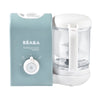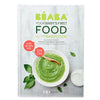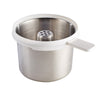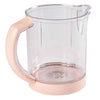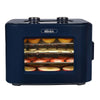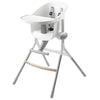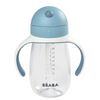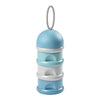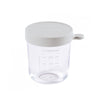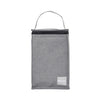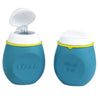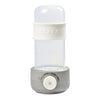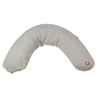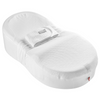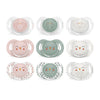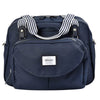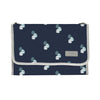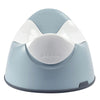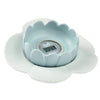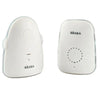It’s completely natural to worry about the risk of choking when starting to introduce your baby to solid foods – especially if you choose to follow a more baby-led weaning approach or when you introduce finger foods. However, as much as the weaning process needs to be enjoyable for your baby, it also needs to be an enjoyable time for you!
To help reduce any feelings of anxiety and panic, I’ve put together a handy guide to help prepare your baby’s first solids safety, whilst ensuring you know what signs to look out for to know if your baby is gagging or choking (and how to deal with it!).

First thing’s first…
To reduce the risk of introducing solid foods before your baby is ready (and therefore reduce the risk of choking), it’s important that your baby is indeed ready to be weaned. If you haven’t already, take a look at my top tips to know how and when to start weaning to give you an idea of the signs to look out for when your baby is around 6 months old, as well as some foods that may be useful to introduce at different time points within your baby’s first few months of life.
Gagging vs Choking
There’s a big difference between gagging (which is normal and requires no intervention) and choking (which isn’t normal and does require intervention). It’s important for all new parents to know that the risk of choking isn’t just there when eating, but when they are able to pick up objects on their own and potentially put them in their mouth. To gain confidence in how to deal with a choking incident if this does happen, I would recommend undertaking an infant and child first aid course, such as Mini First Aid who are now running them online.
The main signs that your baby is gagging:
Your baby is coughing & spluttering
Their face has gone red
The main warning signs that your baby is choking:
Your baby is silent or they have an ineffective cough
Their face is going blue
Gagging
Should you be worried when your baby gags?
As hard as it may be, try not to worry too much about your baby gagging – think of the gag reflex as a protective measure to prevent choking, because this is what it is! Much like talking or walking, your baby also needs to learn how to chew and swallow food properly, and gagging can be part of the learning process of understanding how to chew and swallow.
During the first few months of life, a baby’s gag reflex is more towards the front of the mouth, which is why you may notice gagging if they simply hold an object of a piece of food in their mouth. However, as they develop and grow older (usually once they have passed 6 months), the gag reflex starts to move towards the back of the mouth/throat, so you will likely notice less gagging as your baby becomes more familiar with the chewing and swallowing process.
Should you do anything when they are gagging?
When your baby gags, the main thing you mustn’t do is panic. Keep an eye on your baby and encourage them to cough it up. If you try to interject, this may make it worse and it may also create a negative experience with that food for your baby. You may find that once they have stopped gagging, they will likely carry on as normal, and this should get easier the more feeding experiences they have.
Choking
What should you do if you suspect your baby is choking?
Choking happens when food gets stuck in the airway, rather than going down the food pipe into the stomach. If your baby’s cough is ‘ineffective’, i.e they are silent, and they are unable to cough up the food or object causing the choking, you must shout for help. If they are still conscious, you must encourage them to cough and commence the back blows and chest/abdominal thrust sequence (depending on your baby’s age) as described on the NHS website which also advises on when you should try to remove the object (only if you are confident that you can get it out in one go) and when to call 999.
Which foods may be choking hazards?
To reduce the risk of choking, do not offer babies foods such as whole grapes, cherry tomatoes, olives or large blueberries, hard and small pieces of fruit or vegetables such as raw apple and carrot (these should be grated or steamed), round chocolates and sweets, whole nuts or popcorn. Foods such as sausages should be cut lengthways only (as opposed to disc shapes).
Always take extra precautions when preparing your baby’s food once they start weaning, especially once they start to move onto finger foods and harder textures. Try to ensure the foods are ‘squishable’ at first, so they can easily be broken down between your thumb and your finger e.g skinless cucumber or a steamed carrot stick.
It’s important to remember to never leave your baby unattended when they are eating – not only for their safety, but to familiarise them with the concept of meal times with others, in order to create a positive and pleasurable experience with feeding as they grow and develop.
By Nichola Ludlam-Raine, Registered Dietitian @mummynutrition



